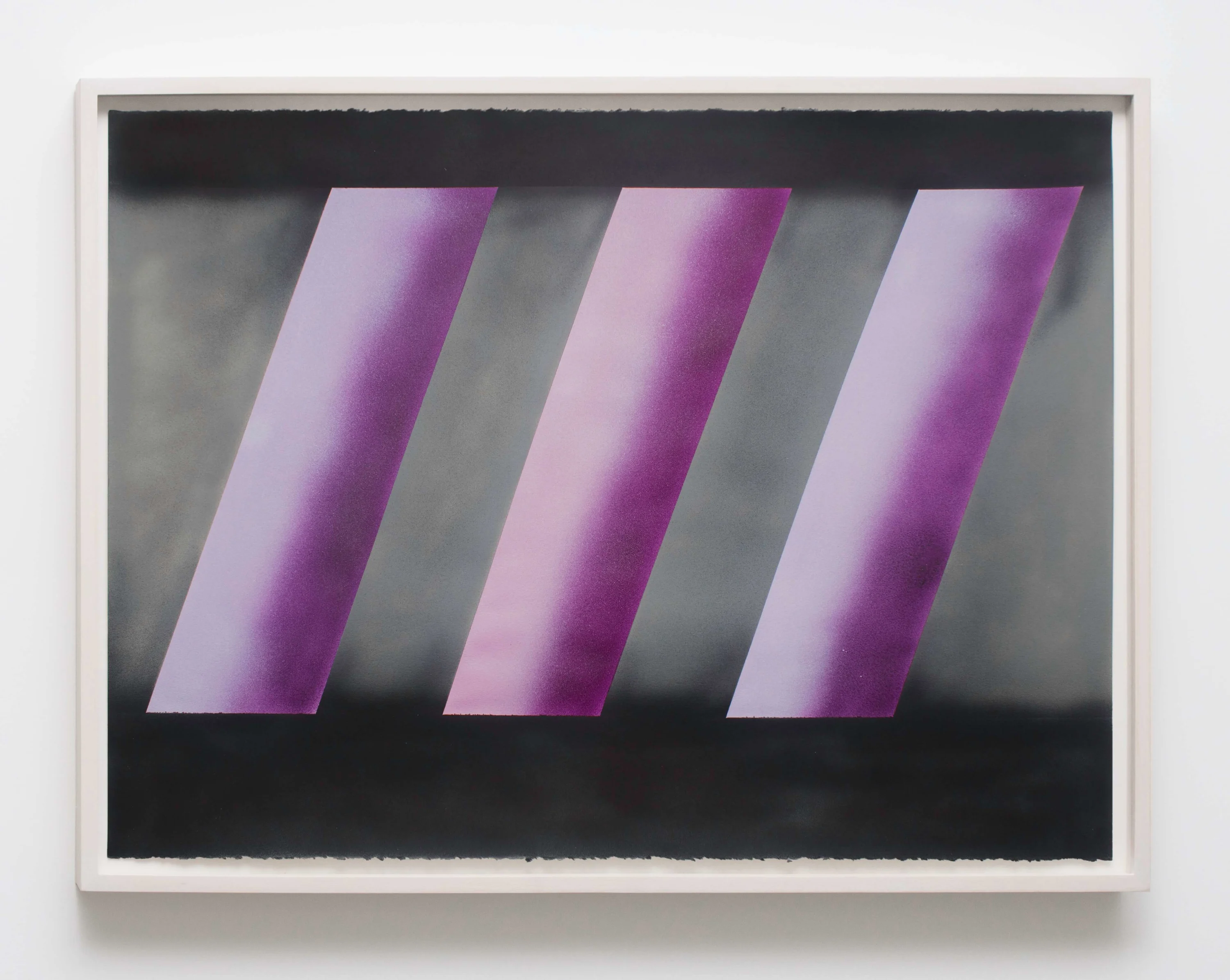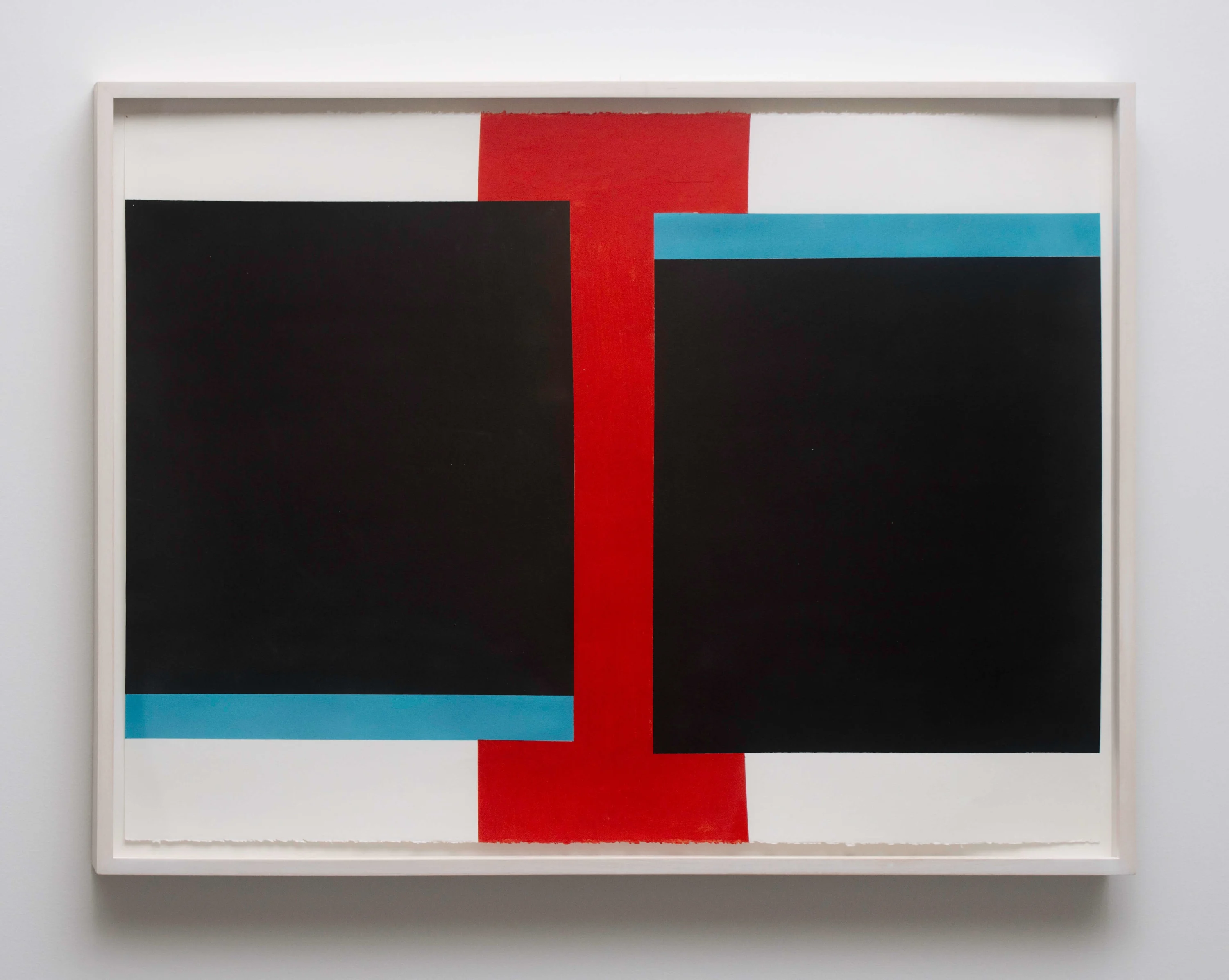

Don Dudley has led a colorful life. The Los Angeles native, who is now in his ninth decade, bridged the gulf between West and East Coast minimalism in the 1960s, and has dedicated his life to a pursuit of stunning color and illusionary compositions. He tells Holly Black how constant experimentation with material and media has evolved his practice over the years.
Courtesy of the Artist and Magenta Plains, NY.
This is a feature made in collaboration with Platform, a site that offers people the opportunity to easily buy artworks from some of the most exciting contemporary artists in the world. We work with them each month to highlight one of their selected artists.
If you like this work, you can buy an exclusive piece from Platform for a limited period of time. Use discount code WEPRESENT for a $100 discount on any purchase over $1000.
93-year-old Don Dudley’s early practice was associated with South California’s Finish Fetish school, where glossy, cinematic hues and industrial materials reigned supreme, and a move to New York in 1969 saw the influence of a more austere and formal sensibility.
Minimalist artmaking was dominated by experiments with unorthodox resources, and Dudley’s practice has been no exception. “I have always tried to create paintings which are really luminous, in which the colors are declaratively bright,” he says. “I’ve tried working on canvas and Masonite, but both surfaces absorb the light too much. I was inspired by industrial paint on custom cars in the 1960s, and how specific the different color palettes were. Using aluminum or Homasote [a type of fiber board] as a surface, and automobile paint as the medium, I could achieve the kinds of finishes I was after.”
Utilizing such materials has not always been an easy task. Dudley recalls that once he had moved to NYC, metalworkers could not work out how to conform aluminum sheets to his specification, which often involved gentle curves or bends. “I brought the cut pieces back to my loft and decided to paint them flat and combine them into single works,” he says, showing how troubleshooting often leads to new forms of experimentation.
While the artist found these innovations inspirational, he has no interest in more recent technologies, where digital slickness and precision has become habitual. “I haven’t a clue about the digital revolution. I leave accidents, traces of hand in a finished piece—wabi sabi.” This reference to the Japanese art of imperfection is evident throughout his works, including recent pieces #203 and #234. In both instances, the gentle tear of the paper’s edge evokes a softness that mitigates the hard lines of his dense blocks of color, while tiny gaps and pigment bleeds exist as physical evidence of the hand at work.
In other pieces, carefully aligned lozenges are airbrushed onto paper with subtle gradients, or else larger, modular blocks are affixed directly onto the wall in considered compositions. For Dudley, these infinite patterns and sequences are always gamed out through drawing, as a way of finding “the negative space in these compositions, so I can plan accordingly.”
The artist’s skills as a draftsman have been honed not only by his art practice, but by an array of jobs that have supplemented his career, including working as a furniture maker upstate. He also held position as the assistant director of the La Jolla Museum of Art (now the Museum of Contemporary Art San Diego) at the outset of his career, as well as a professorship at LA’s Chouinard Art Institute, where he tutored a cohort of younger practitioners including the Canadian conceptual artist, Jack Goldstein.

Stints as an art handler across both coastlines also led to connections across the art world, including with Whitney Museum curator Marcia Tucker, who not only recommended his work to gallerists, but featured him in several shows at the New Museum in the 1970s and 80s. However, such fortuitous meetings could also be fraught, too. The artist recalls how, after sending several works to a new dealer Tucker had recommended, the business soon folded. “His secretary advised me that he had sent them to a Switzerland warehouse, and that was the end of them,” Dudley says. “Several years later I got a midnight call from an art dealer in Chicago, Phyllis Kind, who said that some artists from her gallery who were working in a local warehouse saw a couple of crates with my name on them. Did I want them? Yes.”
Such a lucky discovery demonstrates the precarity of life as an artist, yet Dudley’s resolve has never dwindled. He continues to produce new work, including pieces on paper, aluminum and wood, and has shown in galleries from New York to Cologne and São Paulo. Even in an age where any imaginable color sequence or composition can be conceived with the click of a mouse, Dudley’s material, visceral works continue to inspire.
Platform
This is a feature made in collaboration with Platform, a site that offers people the opportunity to easily buy artworks from some of the most exciting contemporary artists in the world. We work with them each month to highlight one of their selected artists.






